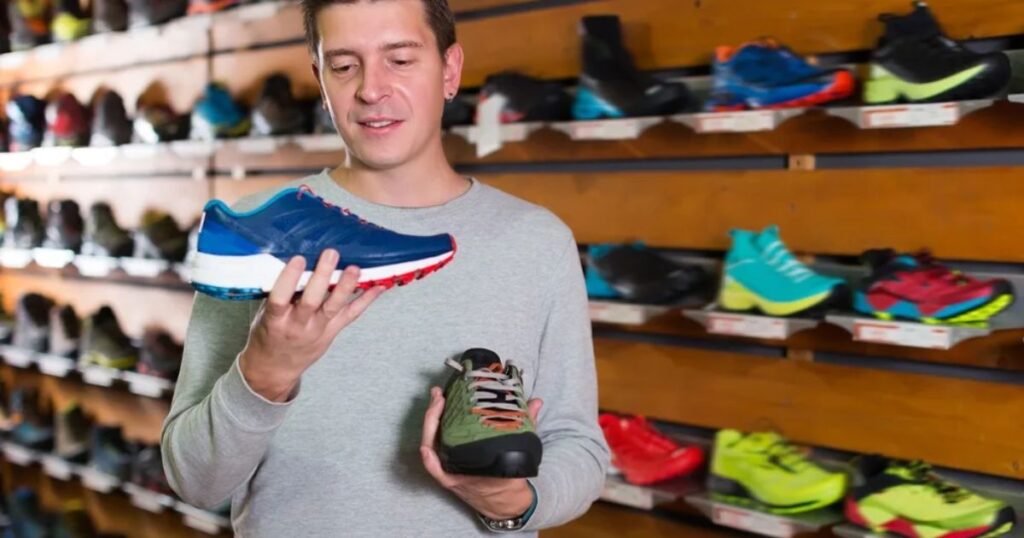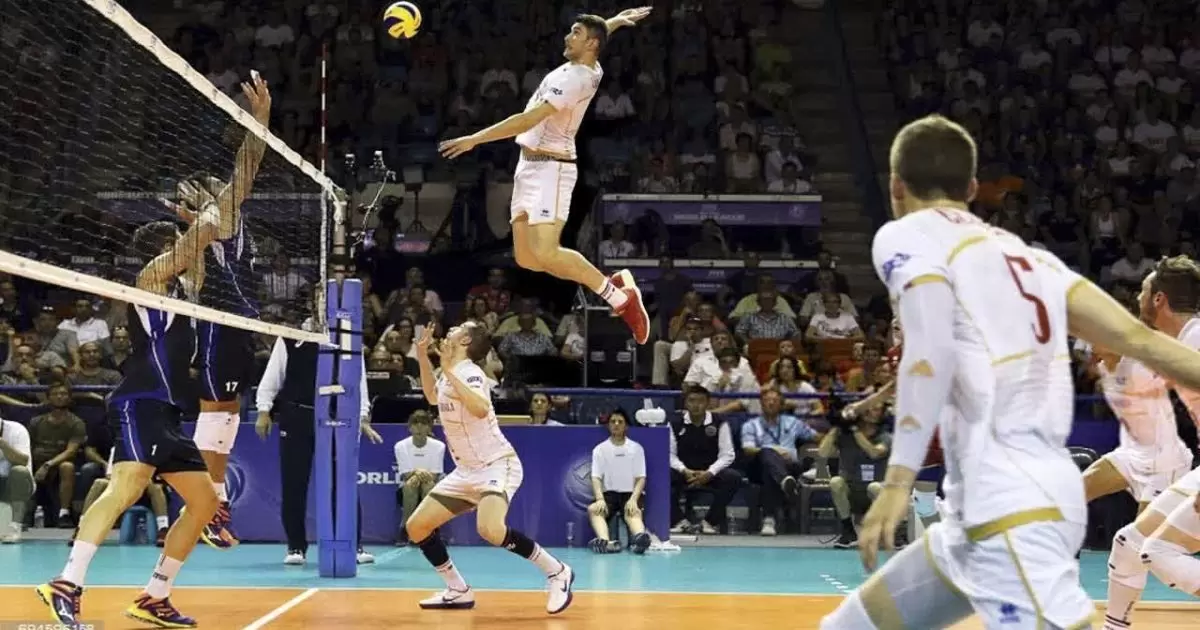Sports enthusiasts often find themselves faced with the dilemma of choosing the right footwear for their preferred activities. In the world of indoor sports, two popular games that require quick movements, agility, and precision are volleyball and basketball. While both sports have their unique characteristics, there is a common question that arises when it comes to choosing the appropriate footwear: Are volleyball and basketball shoes the same?
In this comprehensive guide, we will delve into the key differences and similarities between volleyball and basketball shoes. We will examine the specific requirements of each sport, the design features that set these shoes apart, and offer practical tips for athletes and enthusiasts when it comes to selecting the right pair of shoes.
Understanding Volleyball Shoes
The Nature of Volleyball
Volleyball is a fast-paced, dynamic sport that demands players to constantly change directions, jump, and make quick lateral movements. It is predominantly an indoor game, and the playing surface is typically a wooden or synthetic court. The unique characteristics of volleyball place specific requirements on footwear.
Key Features of Volleyball Shoes
Volleyball shoes are designed with the following features in mind:
1. Lightweight Construction
Volleyball shoes are lightweight to enable players to move quickly and jump efficiently. The reduced weight reduces the burden on the athlete’s legs, allowing them to be more agile on the court.
2. Gum Sole
Gum soles provide excellent traction on indoor courts. They are non-marking, preventing scuff marks on the playing surface. The gum sole’s grippy nature assists players in making quick lateral movements and sudden stops.
3. Low-Top Design
Most volleyball shoes have a low-top design, which provides flexibility for ankle movement. This is essential for quick pivots, lateral movements, and frequent jumping.
4. Cushioning and Shock Absorption
Volleyball shoes have ample cushioning in the heel and forefoot areas to absorb the impact of repeated jumps and landings. This helps reduce the risk of injuries such as shin splints.
5. Breathable Upper
The upper part of volleyball shoes is typically made from breathable materials to keep the feet cool and comfortable during intense matches. Proper ventilation is crucial for preventing discomfort and blisters.
Understanding Basketball Shoes
The Nature of Basketball
Basketball, like volleyball, is a fast-paced indoor sport, but it has its unique characteristics. Basketball involves a lot of jumping, sudden stops, and lateral movements. Players need to be able to pivot quickly, change direction, and execute precise dribbling and shooting.
Key Features of Basketball Shoes
Basketball shoes are designed with the following features in mind:
1. Ankle Support
One of the defining features of basketball shoes is their high-top design. This provides excellent ankle support, which is crucial for preventing sprains and other ankle injuries during intense games.
2. Herringbone Tread Pattern
Basketball shoes have a herringbone tread pattern on the sole to maximize traction on indoor courts. This pattern ensures that players can make sharp cuts and quick changes in direction without slipping.
3. Cushioning and Impact Protection
Basketball shoes offer substantial cushioning and shock absorption in the heel and forefoot areas to mitigate the impact of jumps and hard landings, common occurrences in basketball.
4. Durable Construction
Basketball shoes are built to withstand the rigors of the game, with reinforced materials in high-wear areas. This durability ensures that the shoes can endure the physical demands of basketball.
5. Breathable Materials
Similar to volleyball shoes, basketball shoes also feature breathable materials to keep the feet cool and comfortable, but this factor is not as critical as in volleyball shoes.
Key Differences Between Volleyball and Basketball Shoes
Now that we’ve examined the specific features of volleyball and basketball shoes, let’s highlight the key differences between the two:
1. Ankle Support
Volleyball shoes typically have a low-top design, offering minimal ankle support. In contrast, basketball shoes have a high-top design to provide maximum ankle support and reduce the risk of sprains and other ankle injuries.
2. Traction Pattern
Volleyball shoes have a gum sole with a smooth, non-marking surface, designed for quick lateral movements and precise footwork. On the other hand, basketball shoes feature a herringbone tread pattern for sharp cuts, quick changes in direction, and superior grip on the court.
3. Weight
Volleyball shoes are lighter in weight compared to basketball shoes. The lightweight design of volleyball shoes facilitates faster movements and jumping.
4. Cushioning
While both types of shoes offer cushioning for shock absorption, basketball shoes often have more pronounced cushioning in the heel and forefoot areas due to the higher impact nature of the sport.
5. Durability
Basketball shoes are typically constructed with durability in mind, as basketball involves frequent contact with the court and other players. Volleyball shoes may not prioritize durability to the same extent.
6. Breathability
Both types of shoes prioritize breathability, but volleyball shoes may put slightly more emphasis on ventilation to keep the feet cool during long rallies.
When Can Volleyball and Basketball Shoes Be Interchangeable?
| Feature | Volleyball Shoes | Basketball Shoes |
| Ankle Support | Low-top design | High-top design |
| Traction Pattern | Gum sole, non-marking | Herringbone tread pattern |
| Weight | Lightweight design | Heavier compared to volleyball shoes |
| Cushioning | Adequate cushioning | Pronounced cushioning due to high impact |
| Durability | May prioritize other features over durability | Built with durability in mind |
| Breathability | Emphasis on ventilation for cool feet | Also breathable but not as critical as in volleyball shoes |
In certain situations, volleyball and basketball shoes can be interchangeable, but this largely depends on individual preferences and the level of play. When pondering “What Shoes Do Basketball Players Wear?” or whether volleyball shoes could suffice, it’s crucial to consider a few key factors.
Recreational Play
For individuals playing volleyball or basketball at a recreational level, where the intensity and frequency of play are relatively low, it is possible to use one pair of shoes for both sports. This can save money and make sense for casual athletes.
Personal Comfort
Ultimately, personal comfort plays a significant role in deciding whether to use volleyball or basketball shoes for a particular sport. If an athlete feels more comfortable and confident in one type of shoe for both sports, they may choose to use that shoe.
Flexibility in Play Style
Some athletes, particularly at the amateur level, may adapt their playing style to the type of shoe they have. For example, a basketball player using volleyball shoes may be more cautious about ankle stability, while a volleyball player in basketball shoes may pay extra attention to lateral movements.
Tips for Choosing the Right Shoes

When it comes to selecting the appropriate footwear for volleyball or basketball, consider the following tips:
1. Assess Your Playing Style
Determine your playing style and the specific demands of your chosen sport. If you frequently make sharp cuts, need ankle support, and often jump, basketball shoes may be more suitable. If you require quick lateral movements, lightness, and precise footwork, volleyball shoes may be the better choice.
2. Try Both Types of Shoes
If you’re uncertain which type of shoe is best for you, it’s advisable to try both. Visit a sports store with a knowledgeable staff who can guide you in selecting the right shoes for your needs. Trying on different pairs and walking or jumping in them can help you feel the difference.
3. Consider Your Budget
Volleyball and basketball shoes come in various price ranges. While it’s essential to invest in quality footwear that meets your specific requirements, it’s also important to stay within your budget.
4. Consult with Coaches or Experienced Players
If you’re still unsure, seek advice from experienced coaches or players in your sport. They can offer valuable insights and recommendations based on their expertise.
5. Prioritize Fit and Comfort
Regardless of your choice, prioritize fit and comfort above all else. Ill-fitting shoes can lead to discomfort, blisters, and even injuries. Make sure your chosen shoes provide a snug fit without being too tight.
Conclusion
In the debate of whether volleyball and basketball shoes are the same, the answer largely depends on the individual, their level of play, and their specific needs. Both types of shoes are designed to cater to the unique demands of their respective sports. Volleyball shoes are lightweight, prioritize lateral movement, and offer gum soles for grip, while basketball shoes have a high-top design, provide ankle support, and feature herringbone tread patterns for quick cuts.
Ultimately, the best choice of footwear for volleyball or basketball comes down to understanding the specific requirements of your sport, your personal preferences, and the level of play. Whether you opt for volleyball shoes, or basketball shoes, or find a pair that suits both sports, the most important factor is to ensure that your shoes enhance your performance and protect you from injuries on the court.



